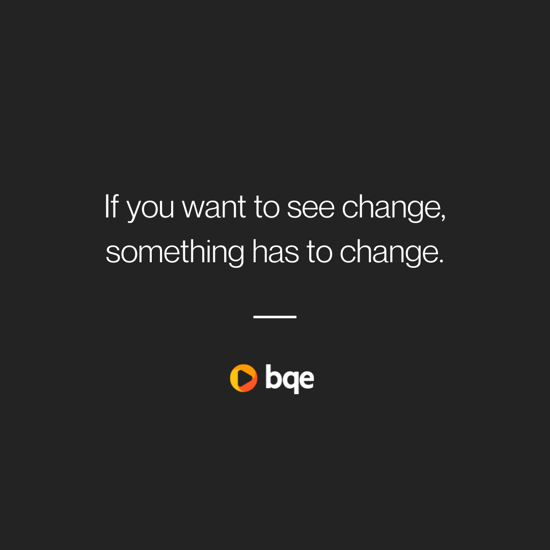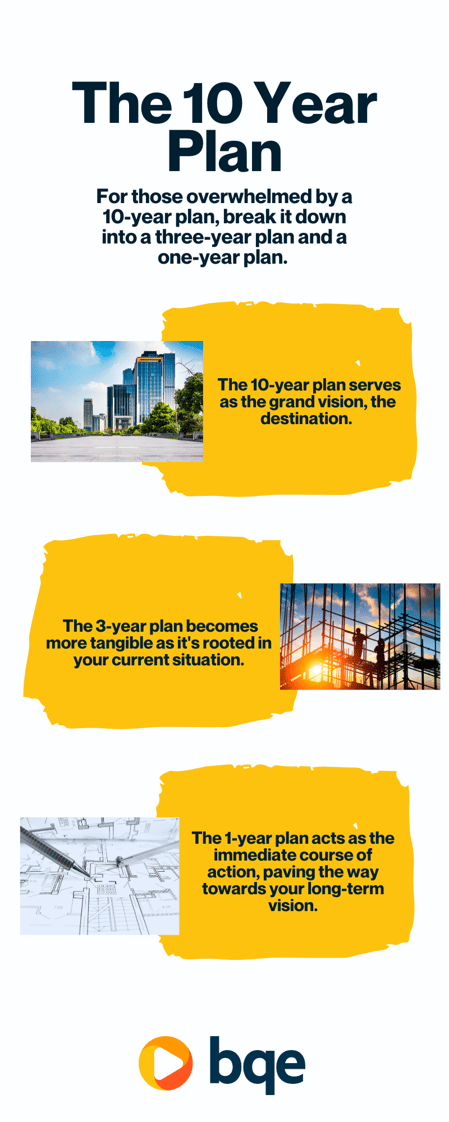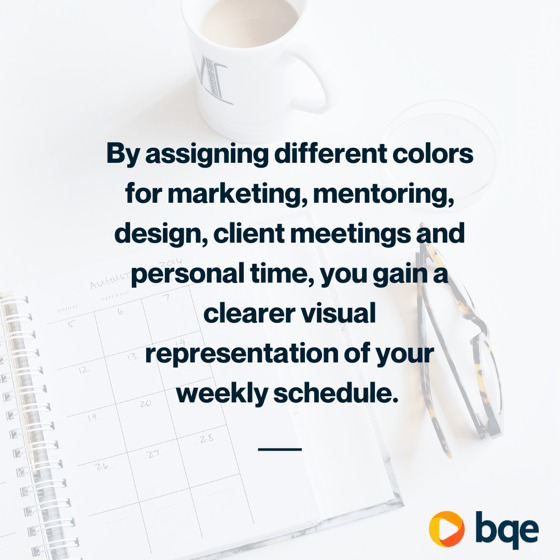5 Ways to Build an Effective Architecture Firm Marketing Strategy
Elevate your architectural firm with proven marketing strategies to generate leads, drive conversions, and create brand awareness.
Architect and business coach, Douglas Teiger, FAIA, shares the secret to creating a work life balance and how to be intentional about your goals.
Acclaimed architect and business coach, Douglas Teiger, FAIA, recently had a chat with Mark R. LePage on the EntreArchitect’s podcast, discussing the importance of work life balance and the ins and outs of leading a fulfilled life as an architect in a small firm.
Douglas's current endeavor centers around empowering young architectural firms. He does this by offering guidance to expedite their growth when they clarify and define their business and personal goals. Drawing from his architectural background and spiritual psychology degree, he underscores the importance of work-life balance as a key component of a successful practice.
His mantra is simple: Love what you do and do what you love.
Here are Douglas' words, in his own voice:
Your creativity is your intellectual asset. The way you run your business – your chart of accounts, your systems and financial controls, your project management skills – these can be shared. And sharing this knowledge with my clients is my current purpose. My joy comes from seeing my clients succeed. So, helping you find a way to achieve your goals and still live a fulfilling life outside of your career is what I’d like to share with you today.
Let me delve a little into my background and why a work-life balance is so important to me.
I am a proud graduate of Cornell University, finishing a five-year program in just four because I was eager to start working in a firm. I had known since I was about nine years old that I wanted to be an architect.
I've had the privilege of working for a 300-person firm, a 25-person firm, and a three-person firm. This gave me the experience of operating in a large, medium, and small setting. It also solidified my desire to start my own office.
There was a 70-year-old spec writer, Hans Meier, who taught me the ropes of the business. He passed away 20 years ago, but he was instrumental in shaping the early part of my career, making me realize the importance of mentorship.
Fast-forward to the year 2000, I founded ATA and a decade later, I earned a Master's in Spiritual Psychology, which was a transformative milestone in my life.
Up until then, I had been relentlessly focused on work and the future and my story was … I’ll be happy when…. when I accomplish this or that, when this or that happens. I was not living in the present moment.
In 2019, I was fortunate enough to elevate three associates to partners. This transition allowed me to shift from being a managing partner at my firm to a mentor, assisting multiple firms. I call myself a partner for hire with no equity. I act as a sounding board where many firm owners don’t have another neutral voice to bounce off ideas with.
I have worked with my own business coach for over 12 years. He has been instrumental in this journey. A few years back, my coach pointed out that I had the potential to be a fantastic business coach myself. The question was, why limit myself to one firm when I could be making a difference in many firms while staying at the 30,000 foot level?
All of my life experiences have led me to merge my understanding of design with the art of leadership from a Spiritual Psychology perspective.
Over the past 40 years, I've gathered a wealth of knowledge, which is all about sharing, fostering connections, and nurturing relationships. I believe that life is about seizing every learning opportunity that comes your way. Every experience, every setback, every victory is a lesson. Whether you lose a project, an employee quits, or you win an award - always ask, "What can I learn from this?"

Life, as I see it, is about constantly learning, reflecting on how we got there, appreciating the good times, and questioning whether there is something I want to do differently in the defeats.
If you want to see change, something has to change.
There is an old saying that insanity is doing the same thing over and over and expecting different results. Being a business and life coach for the design industry isn't just about helping them make the world a better place, it's helping them see their own personal potential and being aware of the choices they make in each moment. First take care of yourself so you can help take care of others.
I spent two years in New York working for a 300-person firm, and another two in LA for a world class architect, winning the San Diego Convention Center competition. I then went to work for a famous interior designer, Waldo Fernandez. I was immersed in my work, sometimes 16-hour days, loving every minute, but gradually becoming burnt out.
An encounter with my roommate made me question the purpose of life. He planned to travel the world with a hefty retainer he got to keep from a canceled project. Envious of his luck and seeing myself working tirelessly, I decided to join him on his travels. I was 27, I feared I was making a huge mistake, throwing away my dream job, or thinking could I ever get this kind of job again if I quit. I chose a life experience.
I traveled for a year with just a backpack, no plans, no agenda. I even spent two weeks in a silent retreat at a monastery in Nepal.
The monastery taught me a valuable lesson: that a sense of inner peace can be challenging to maintain in any large bustling city like Los Angeles or New York. I returned from my travels with a renewed sense of self, even landing a better job than before.
My philosophy is simple: we are not just architects; we are divine beings using this human experience.
I happened to choose practicing architecture as one outlet to express my gifts. This mindset creates space for life balance.
However, being an architect doesn't define who I am and is not used as a measure of my value. I practice architecture as an aspect of my existence, and this is a crucial message I hope people absorb. Many architects see their identity and value based on their projects winning awards, getting press, getting bigger projects or making lots of money. There is a possibility that identifying first as architects often causes one to look outside ourselves for validation.
What can you take away from this to set you on your path?
Awareness.
Thoughts typically start subconsciously and there is an opportunity to become aware of these thoughts and the story you are holding onto with respect to these thoughts.
The next step is to choose your words. Words carry weight, and they're critical in this process. I've conducted numerous workshops on core values and often noticed people start with a negative statement of their value. I suggest flipping this around. State what you want, not what you don't want. For instance, simply expressing the intention for a balanced life vs I don’t want to work such long hours.
Balancing my life was a struggle initially. As a father of three boys, I found myself missing dinner with them from Monday to Friday during the first six years of their lives. Following my master's program in Spiritual Psychology, I chose to renegotiate my professional commitments. I prioritized family time and a balanced life over monetary gain. I walked my talk, sacrificing a portion of my shares back to my partner to uphold what mattered to me most- time with my family which I would never get back.
The key is to be intentional about your goals.
Where do you see yourself in 10 years? What are your financial and family objectives? How can you strike a balance that ensures a win-win situation?
Once you have a vision, every decision you make either supports that goal or derails it. At times, you might have to take on a project demanding 80-hour weeks, but it could potentially catapult you into a new phase.

Envisioning a 10-year plan involves understanding your current situation, your desired outcome, and visualizing the journey to get there.
For those overwhelmed by a 10-year plan, I suggest breaking it down into a three-year plan and a one-year plan. The 10-year plan serves as the grand vision, the destination. The three-year plan becomes more tangible as it's rooted in your current situation, and the one-year plan acts as the immediate course of action, paving the way towards your long-term vision.
Now if you're aiming for a 20% growth per year, you'll need to brace yourself for substantial work. It essentially boils down to mathematical calculations.
For instance, if your firm is earning a million dollars a year and your growth target is 10% per annum, that's an additional hundred thousand dollars yearly. To achieve this, you'll need to generate a certain number of projects, earn a particular amount in fees, and hire a specific number of employees.
But the question remains, are you prepared to put in the necessary effort to secure that many projects?
This leads us to the marketing aspect of your business: How many networking events are you attending? How many contacts are you building into relationships? How many follow-up meetings are you scheduling from these networking events, and how many of those are translating into potential leads or requests for proposals? You'll also need to track the ratio of repeat to new clients. All these metrics play a critical role in determining the speed at which you can grow your business.
Start with your grand vision, the 10-year plan, and gradually narrow it down to a five-year, then a one-year plan. The goal is to simplify this broad vision into actionable steps you can take today to meet the metrics that align with your ultimate intention.
Consider your journey as a series of steps to be taken within a 90-day cycle. This strategy allows you to have a clear picture of where you're headed, and it establishes a sense of accountability, enabling you to adjust your path as needed to stay on track with your plan.
Transform your plan into a roadmap of daily actions that contribute to your future goals. If we consider a 40-hour work week, how are you spending that time? In my view, a quarter of that time should be invested on your business vs in your business.
This implies spending 25% of your time improving the processes that drive your business' success, such as establishing better financial controls, enhancing project management accountability, setting up more efficient charts of accounts, and monitoring Key Performance Indicators (KPIs). The same portion of your time should be allocated to marketing and business development efforts.
The remaining half should be evenly split between working on design projects, mentoring your staff and nurturing existing client relationships.

Often, your workweek may seem to control you, where you're merely ticking off tasks on your list to keep the business afloat. But a more strategic approach would be to color code your calendar. By assigning different colors for marketing, mentoring, design, client meetings and personal time, you gain a clearer visual representation of your weekly schedule.
Surprisingly, few individuals track their own time, particularly those in leadership roles. However, in a service industry where time equals money, tracking time—even for those not directly billable—is crucial.
Your journey is shaped by the decisions you make, which should be grounded in what you ultimately envision for your life. However, before making any decisions, it's crucial to set your intentions regarding where you wish to end up, and then let those intentions guide your choices.
Just as you can't chart a course without knowing your destination, you can't efficiently operate in any industry without a plan. The building must be designed before construction can begin; you can't simply instruct a contractor to "go build it."
So, start by crafting that 10-year plan, and then work your way back from there.
Remember, this planning shouldn't be a solo endeavor. Consider it a workshop involving your leadership team. If you don't have such a team, gather people whose opinions you value—your partner, business-savvy friends, mentors—and have five to six of them participate.
If you're a small firm owner wondering what you can do today to build a better business for tomorrow, begin by setting an intention for where you want your business to be, and put it in writing.
Achieving your written intentions can serve as a great morale booster. If you find you haven't met your intentions, take it as an opportunity to course correct and strategize on what you can do differently to achieve them. Once you've accomplished one goal, you can then set your sights on the next. Set small achievable goals that can move you in the direction of your 10 year plan.
Make work life balance easier with the right firm management software. When you have automated software that handles the busy work and helps you reach your goals quickly, you can find more time to focus on doing what you love.
Try a free demo today and see why architects, engineers, and other professional services have switched their current processes to BQE CORE.
Douglas Teiger, FAIA, is an accomplished architect and entrepreneur with a passion for innovation and balance. A graduate of Cornell University with a BArch degree in 1982, he founded his own firm in 1989 and grew it from a one-person operation to a thriving 32-person team, serving as managing partner. In 2009, Douglas earned a Master’s in Spiritual Psychology from USM, where he learned invaluable tools and skills that he now shares with his staff and clients. By effectively streamlining operations and fostering a holistic approach to work-life balance, he has created a culture that prioritizes creativity, excellence, and well-being. Douglas is also an active member of the architecture community, having served as President of the AIA Los Angeles Chapter in 2017 and on the AIA National Strategic Council.
Elevate your architectural firm with proven marketing strategies to generate leads, drive conversions, and create brand awareness.
Discover the best practices for setting up a strong chart of accounts such as the hierarchy and structure and how to ensure it remains scalable.
Big Risk for Bigger Reward in Small Architecture Firms, Part 1 - BQE Software
Be the first to know the latest insights from experts in your industry to help you master project management and deliver projects that yield delighted clients and predictable profits.